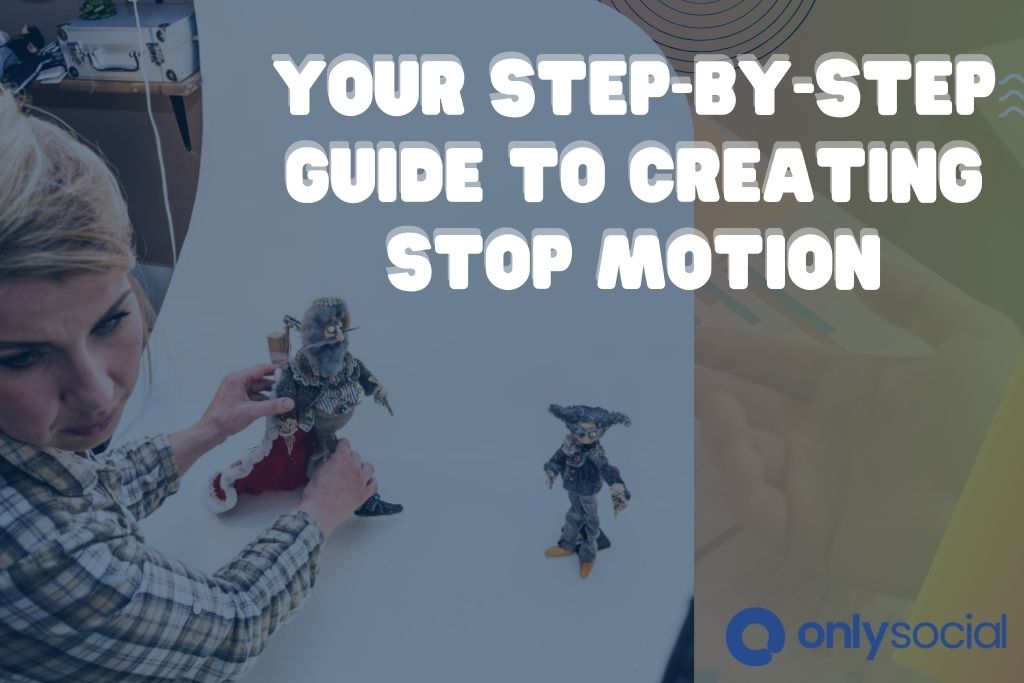Creating stop-motion films may seem complex and expensive, but fear not! This step-by-step guide debunks those assumptions and provides a comprehensive and accessible approach to the art of stop motion.
By following these detailed instructions, you’ll learn how to:
- Plan your projects
- Gather materials
- Set up a studio
- Capture frames with movement
- Edit your final film
With your patience and attention to detail, you can quickly master the captivating world of stop-motion animation.
Let’s get started!
Table of Contents
- 1 Planning Your Stop Motion Project
- 2 Gathering Your Materials and Equipment
- 3 Setting Up Your Stop Motion Studio
- 4 Capturing Frames and Creating Movement
- 5 Editing and Finalizing Your Stop Motion Film
- 6 BONUS
- 7 Frequently Asked Questions
- 7.1 How Do I Come Up With Creative Ideas for My Stop Motion Project?
- 7.2 What Are Some Common Mistakes to Avoid When Capturing Frames for Stop Motion?
- 7.3 Can I Use My Smartphone to Create a Stop Motion Film, or Do I Need Specialized Equipment?
- 7.4 How Can I Make My Characters in the Stop Motion Film Move Smoothly?
- 7.5 Are There Any Legal Considerations or Copyright Issues I Should Be Aware of When Using Music or Sound Effects in My Stop Motion Film?
Planning Your Stop Motion Project
When planning a stop motion project, it is important to carefully consider the story, characters, and overall visual design. Creating a storyboard is essential in this process as it allows you to map out the sequence of events and plan the shots for each scene. The storyboard serves as a blueprint for your project, helping you visualize how the story will unfold and ensuring that you capture all the necessary shots.
Selecting your characters and props is another crucial aspect of planning a stop-motion project. Characters can be anything from clay figures to everyday objects, depending on the theme and style of your animation. Props are equally important as they help create a realistic setting for your story. Consider their size, weight, and durability when choosing them.
A detailed plan ensures you have all the necessary elements before starting production. It saves time by reducing improvisation during shooting and helps maintain consistency throughout your project. Planning your stop motion project carefully will produce a more cohesive and visually appealing final product.
Gathering Your Materials and Equipment
To gather the necessary materials and equipment for creating a stop-motion film, one must carefully select and acquire the appropriate items. This process requires attention to detail, as each element contributes to the overall quality of the final product. Here are three essential components to consider:
- Choosing the best lighting: Lighting plays a crucial role in setting the mood and atmosphere of a stop-motion film. It can evoke various emotions, such as warmth, mystery, or suspense. The right lighting equipment, such as LED lights or diffusers, is essential for achieving desired effects.
- Selecting the right props: Props are vital in creating a visually appealing and engaging storyline. Whether miniature furniture, vehicles or everyday objects, props add depth and realism to your scenes. Carefully selecting props that align with your narrative will enhance immersion for your audience.
- Choosing characters: Characters bring life to your stop-motion film. Consider their design, size, and flexibility when selecting them—attention to details such as facial expressions or movable joints that enable dynamic movements throughout your animation.
Setting Up Your Stop Motion Studio
Setting up a stop-motion studio involves arranging the necessary equipment and creating an environment that captures precise and controlled movements. When choosing the proper lighting for your stop-motion studio, it is crucial to consider the effect you want to achieve. Soft, diffused lighting can create a gentle, dreamy atmosphere, while harsher lighting can give a more dramatic and dynamic feel. Experimenting with different types of lights and modifiers can help you find the perfect balance for your project.
In addition to lighting, selecting the best camera angle is essential in stop-motion animation. The camera angle will determine how your viewers perceive the scene and its characters. You may choose a low-angle shot to give a sense of power or dominance or a high-angle shot to make subjects appear vulnerable or small. It is important to carefully plan each shot and consider how different camera angles can enhance storytelling.
Setting up a stop-motion studio requires attention to detail and patience. Choosing the proper lighting and selecting the best camera angles for each scene allows you to create visually stunning and captivating stop-motion animations that engage your audience’s imagination.
Capturing Frames and Creating Movement
Capturing frames and creating movement in stop-motion animation involves meticulously capturing individual images and carefully manipulating the position of objects or characters between each frame to convey the illusion of motion. This process requires a combination of technical skill and creative storytelling through movement.
To evoke emotion in the audience, consider incorporating these techniques:
- Timing: The pace at which frames are captured can significantly impact the emotional impact of a scene. Slower movements may create a sense of suspense or melancholy, while faster movements can generate excitement or tension.
- Composition: Attention to placing and arranging objects or characters within each frame can enhance visual storytelling. Consider using different angles, depths, and perspectives to create depth and visually guide the viewer’s attention.
- Expressive Gestures: Utilize subtle gestures or body language to imbue characters with personality and emotions. Small details like hand movements, facial expressions, or changes in posture can communicate volumes without any dialogue.
By employing these capturing techniques while keeping in mind the goal of storytelling through movement, animators can create compelling narratives that engage audiences emotionally.
Patience is key in this process, as every tiny adjustment builds a cohesive story that resonates with viewers.
Editing and Finalizing Your Stop Motion Film
Editing and finalizing a stop motion film involves carefully reviewing and adjusting the sequence of frames to ensure a cohesive narrative structure and smooth transitions between scenes. This process requires various editing techniques to enhance the overall visual experience for the audience. One such technique is using sound effects, which can greatly contribute to the emotional impact of a scene.
To evoke emotion in the audience, you can strategically incorporate sound effects that complement the actions depicted in each frame. For instance, if there is a scene where a character falls, you could add a sound effect of a thud or a gasp to heighten the tension or surprise factor.
To illustrate how sound effects can be utilized effectively in stop-motion films, here is an example table showcasing different emotions and corresponding sound effects:
| Emotion | Sound Effect |
|---|---|
| Happiness | Laughter |
| Sadness | Soft piano music |
| Fear | Heartbeat |
| Excitement | Energetic music |
| Surprise | Sudden loud noise |
BONUS
Elevate your stop motion creations with OnlySocial’s Post Planning and Scheduling function. Planning and scheduling your posts across all social networks is crucial for maintaining a consistent and engaging presence. With unlimited posting and the ability to manage unlimited social profiles, OnlySocial empowers you to take control of your social media strategy. Don’t miss out on this opportunity! Sign up for our commitment-free 7-day trial today.
Frequently Asked Questions
How Do I Come Up With Creative Ideas for My Stop Motion Project?
Creating creative ideas for a stop-motion project involves finding inspiration, using brainstorming techniques to explore different themes, experimenting with materials and props, and incorporating storytelling elements to create engaging narratives that showcase emotions through movements.
What Are Some Common Mistakes to Avoid When Capturing Frames for Stop Motion?
When capturing frames for stop motion, it is important to avoid common mistakes. These may include inconsistent lighting, shaky camera movements, improper framing, insufficient spacing between frames, and inadequate attention to detail.
Can I Use My Smartphone to Create a Stop Motion Film, or Do I Need Specialized Equipment?
Using a smartphone to create stop-motion films is possible, but it has limitations regarding image quality and control. Specialized equipment offers benefits such as better frame accuracy and higher resolution.
How Can I Make My Characters in the Stop Motion Film Move Smoothly?
Creating smooth movement in character animation requires a careful application of various techniques. Attention to detail, patience, and an understanding of the principles of motion are essential for achieving the desired effect in stop-motion films.
Are There Any Legal Considerations or Copyright Issues I Should Be Aware of When Using Music or Sound Effects in My Stop Motion Film?
Legal and copyright issues should be considered when using music or sound effects in a stop-motion film. Fair use guidelines may apply, but seeking proper permissions or licenses is advisable to avoid potential legal disputes.




